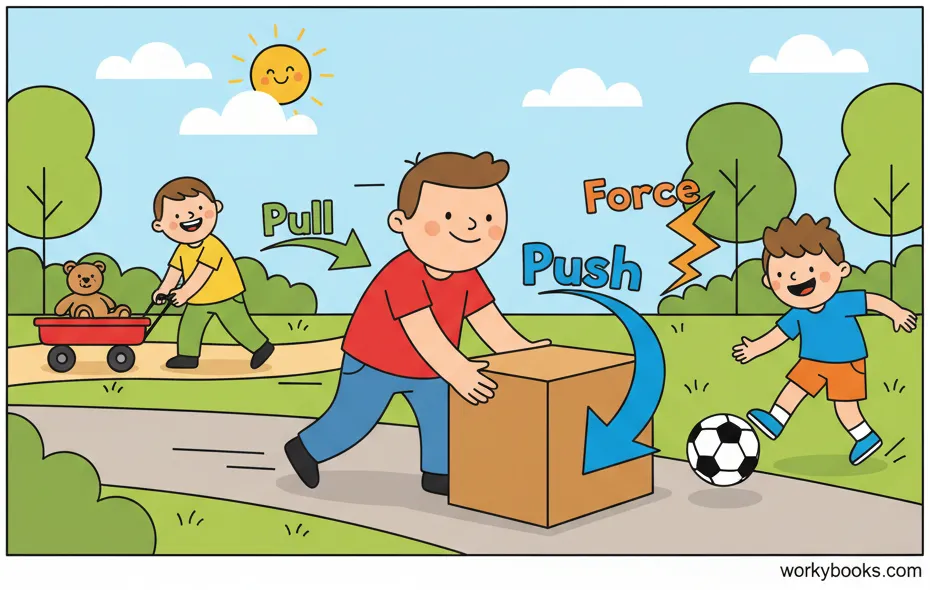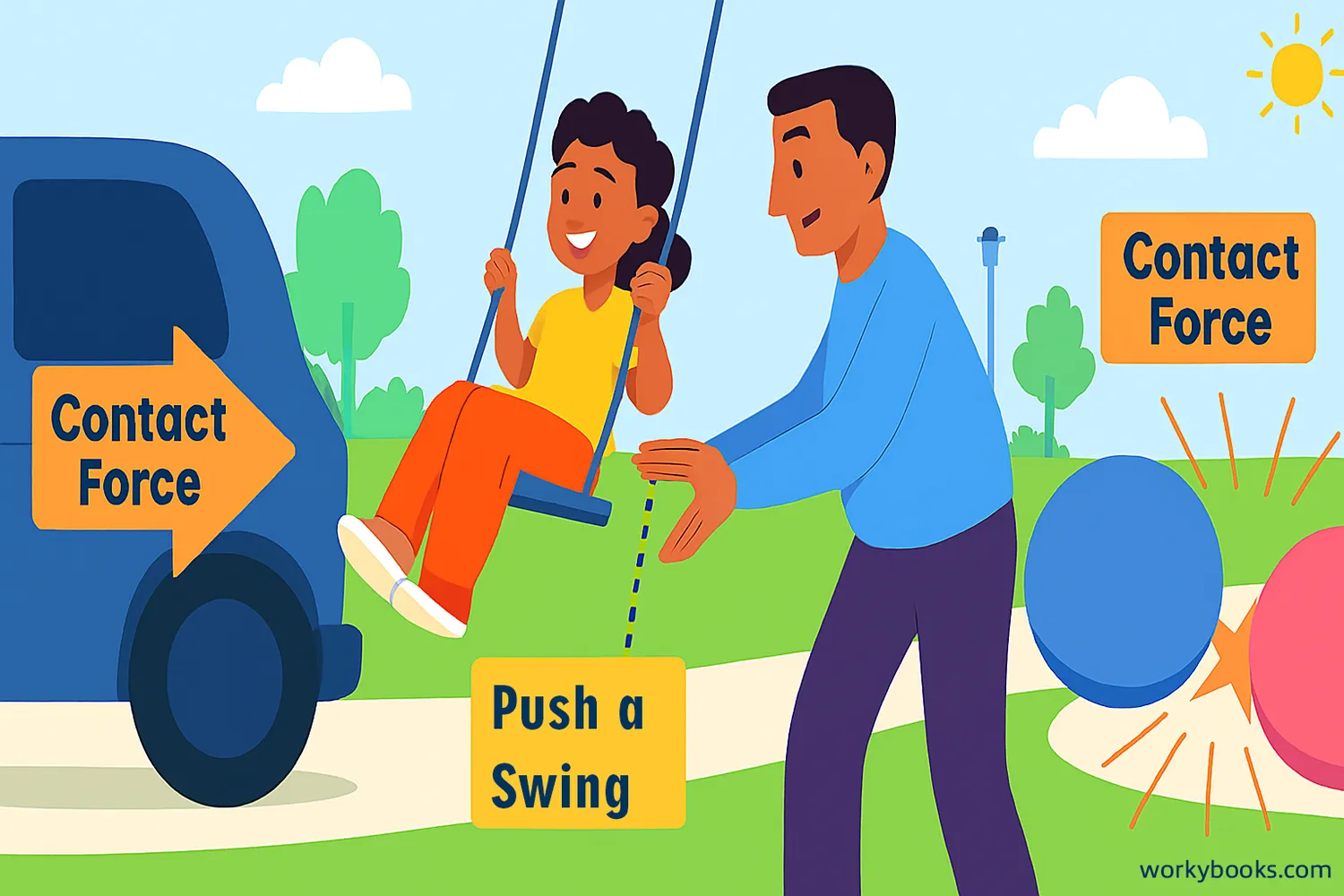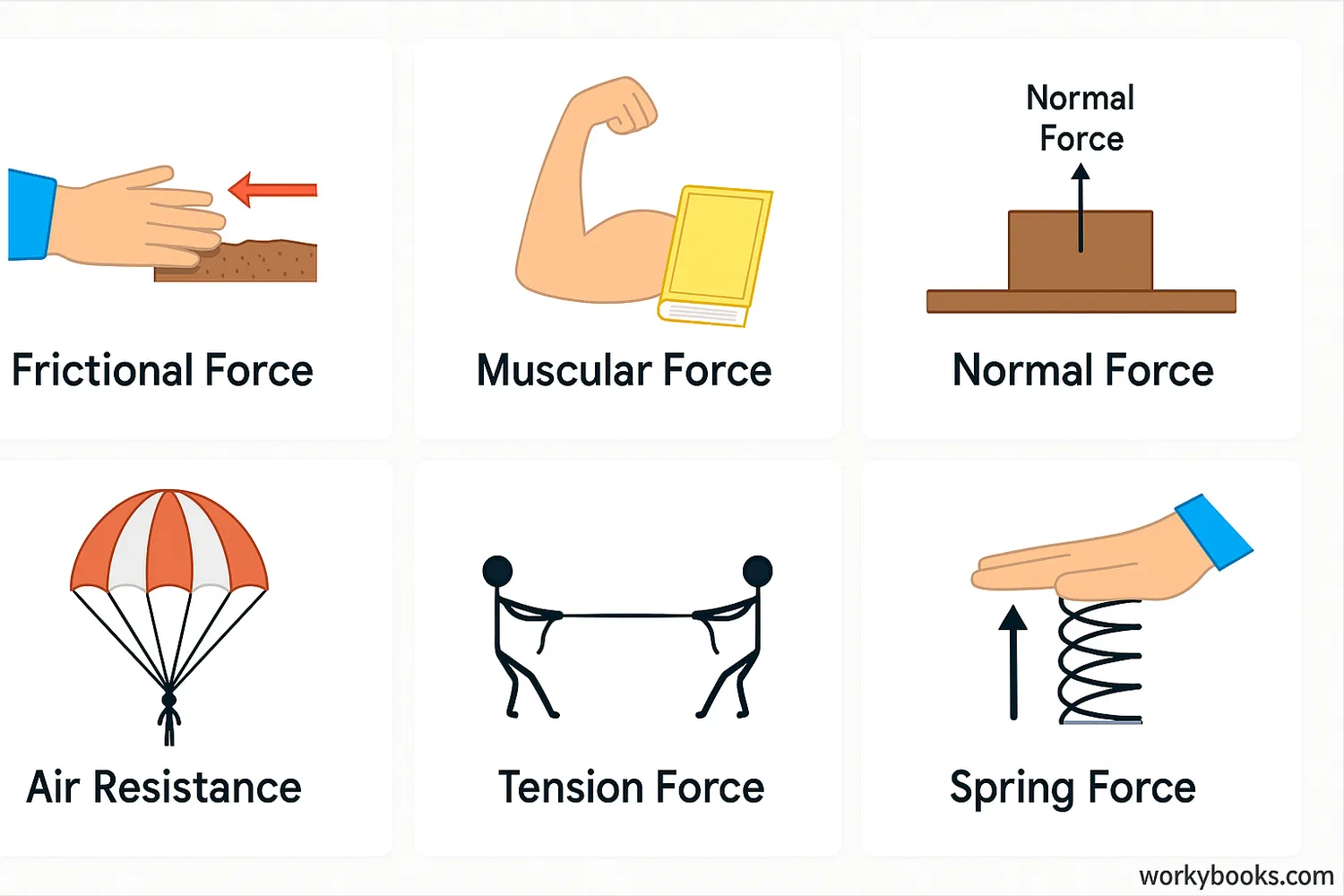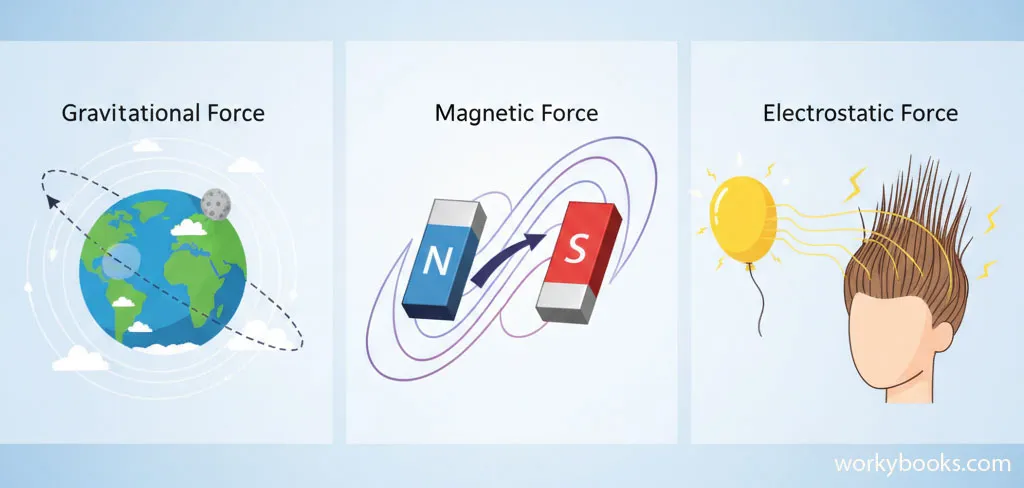Contact Forces - Definition, Examples, Quiz, FAQ, Trivia
Discover the invisible pushes and pulls that make things move in our world!
What is Force?

A force is a push or pull that makes objects move, stop moving, or change direction. Forces can't be seen, but we can see their effects all around us!
When you push a swing, pull a wagon, or kick a ball, you're using force. Even when you're sitting still, forces are acting on you - gravity is pulling you down, and the chair is pushing up to support you.
Science Fact!
Sir Isaac Newton described how forces work with his three laws of motion over 300 years ago, and we still use these principles today!
What are Contact Forces?

Contact forces are pushes or pulls that happen when two objects touch each other. The force is applied through physical contact between the objects.
Think about opening a door - your hand touches the doorknob and pushes or pulls it. Or when you write with a pencil - your fingers touch the pencil and push it across the paper. These are both contact forces!
Physical Touch
Two objects must be touching each other
Force Applied
One object pushes or pulls the other
Effect Visible
The object moves, stops, or changes direction
Types of Contact Forces

Contact forces come in different types, each with special characteristics. Here are the main types of contact forces:
Frictional Force
Acts between surfaces that are sliding or trying to slide against each other.
Example: The grip between your shoes and the ground when walking
Muscular Force
Force applied by muscles of humans or animals.
Example: Lifting a book or pulling a wagon
Normal Force
The support force exerted on an object that is in contact with another stable object.
Example: A book resting on a table doesn't fall because the table pushes up on it
Air Resistance
A special type of frictional force that acts on objects moving through air.
Example: A parachute slowing down a skydiver
Tension Force
Force transmitted through a string, rope, cable or wire when pulled tight.
Example: A rope in a tug-of-war game
Spring Force
Force exerted by a compressed or stretched spring upon any object attached to it.
Example: A spring in a pen or a mattress
These forces are everywhere in our daily lives. Understanding them helps us understand how and why objects move the way they do!
Non-Contact Forces

Not all forces require physical contact. Some forces can push or pull on objects without touching them! These are called non-contact forces.
The main types of non-contact forces are:
Gravitational Force
The force that pulls objects toward each other. Earth's gravity pulls everything toward its center.
Magnetic Force
The force exerted by magnets when they attract or repel each other.
Electrostatic Force
The force exerted by stationary charged objects on each other.
Key Difference
Contact forces require physical touch between objects, while non-contact forces can act at a distance without any physical contact!
Forces Quiz
Test your knowledge about forces with this quiz! Answer all 5 questions to see how much you've learned.
Frequently Asked Questions
Here are answers to some common questions about forces:
Science Trivia
Discover some amazing facts about forces!
Gravity is the Weakest Force
Gravity is the weakest of the four fundamental forces, yet it acts over the longest distances. The gravitational force between two objects is incredibly small unless at least one object has enormous mass (like a planet or star).
Friction Creates Heat
When you rub your hands together quickly, they get warm. This is because friction converts kinetic energy (energy of motion) into thermal energy (heat). This principle is used in matches to create fire!
Strongest Human Muscle
The strongest muscle in the human body relative to its size is the masseter (jaw muscle). It can create a force of over 200 pounds (90 kilograms) on the molars! This is why we can bite through tough foods.
Zero Gravity Misconception
Astronauts in orbit experience weightlessness not because there's no gravity (gravity is still about 90% as strong as on Earth), but because they're in constant freefall around the Earth, creating the sensation of zero gravity.


